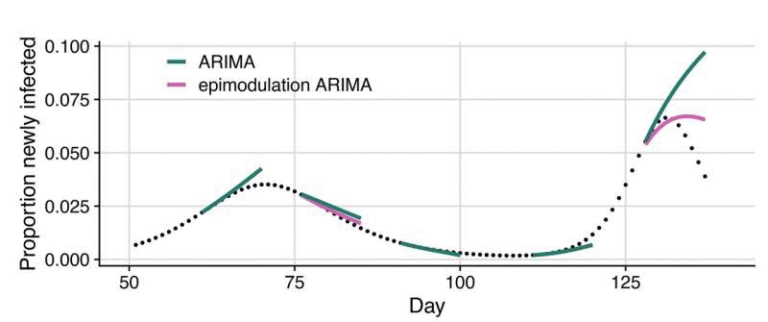Early Mesoamerican Builders Created a Massive Monument That Reflected Their Vision of the Universe

Archaeologists have uncovered remarkable new details about Aguada Fénix, one of the earliest and largest monumental constructions in the Maya area, revealing that this enormous site was likely designed as a cosmogram—a physical model of how ancient people believed the universe was ordered. Located in the state of Tabasco in southeastern Mexico, Aguada Fénix has rapidly become one of the most important discoveries in Mesoamerican archaeology, challenging long-held assumptions about how early societies built ceremonial landscapes, organized labor, and understood the cosmos.
The site first came to light in 2017, when researchers used lidar technology—a laser-based scanning method capable of penetrating dense vegetation—to create detailed 3D maps of the terrain. Hidden beneath what appeared to be ordinary ranchland was a monumental rectangular platform nearly a mile long and a quarter-mile wide, rising between 30 and 50 feet above the natural ground. Dating to around 1000 B.C., Aguada Fénix predates urban giants like Tikal and Teotihuacan by nearly a millennium, yet rivals or even exceeds many of their constructions in sheer scale.
Following the site’s initial identification, researchers led by Takeshi Inomata and Daniela Triadan of the University of Arizona surveyed a vast region and identified nearly 500 other smaller ceremonial sites with similar layouts. This indicated that Aguada Fénix was not an isolated experiment but part of a much broader architectural and cultural movement during the Middle Preclassic period.
But the most striking discoveries came from recent excavations at the heart of the site, where archaeologists uncovered clear and compelling evidence that the builders of Aguada Fénix intentionally embedded cosmic symbolism into the architecture. At the center of the main platform, the team found a cross-shaped pit, known as a cruciform, filled with ritual offerings that had been carefully placed and then buried. This feature, along with the site’s alignments and large-scale layout, is what led researchers to argue that Aguada Fénix served as a cosmogram—a material representation of their universe.
Inside the cruciform pit, the team uncovered ceremonial axes made of jade, a material with deep spiritual importance in Mesoamerica. Additional carved jade ornaments depicted a crocodile, a bird, and a figure that appears to show a woman giving birth, all motifs with strong symbolic and cosmological resonance. These offerings strongly indicate that the location was reserved for highly meaningful ritual activity.
The most unprecedented find came from the deepest layer of the pit. There, researchers found small piles of mineral pigments—blue azurite in the north, green malachite in the east, yellow ochre and goethite in the south, and faded reddish earth with additional materials in the west. Their arrangement matched ancient Mesoamerican associations between specific colors and the cardinal directions, a cosmological system shared by later Maya and other Native American groups. While these symbolic associations have long been documented in texts and iconography, this is the first physical example of pigments deliberately arranged this way in the archaeological record. This makes the find truly unique and exceptionally informative.
The alignment of the monument itself further reinforces the cosmogram interpretation. The site’s main axis is oriented so that its centerline aligns with the rising sun on October 17 and February 24, dates separated by 130 days. These two solar events bracket exactly half of the 260-day Mesoamerican ritual calendar, one of the most important and ancient calendrical systems in the region. This suggests intentional astronomical planning, a key feature of Mesoamerican ceremonial architecture, and links Aguada Fénix to later Maya traditions.
Beyond the central platform, archaeologists documented an extensive network of raised causeways, sunken corridors, canals, and even a dam feeding water from a nearby lagoon. These features extend outward for as much as six miles, maintaining the same alignment as the main monument. This level of spatial planning indicates not only architectural sophistication but a deliberate attempt to integrate the broader landscape into a single ritual and cosmological design.
One of the most fascinating aspects of Aguada Fénix is what it reveals about social organization during this period. Unlike later Maya cities such as Tikal, which were dominated by powerful kings, Aguada Fénix shows no evidence of a centralized ruler or elite class responsible for commissioning the project. Instead, researchers believe the settlement was led by intellectual or ritual specialists—people skilled in astronomy, planning, and ceremonial knowledge—rather than coercive political leaders.
This challenges old assumptions that large-scale construction requires hierarchical systems and forced labor. Instead, these findings suggest that early communities may have voluntarily gathered to build massive structures out of shared religious or cosmological purpose. The idea that people cooperated on such an immense project without kings or state-level organization offers a powerful reminder that early societies were capable of monumental achievements through collective effort.
The discovery also reshapes our understanding of early Mesoamerican history. For decades, archaeologists believed that ceremonial architecture gradually increased in scale over time. The massive size of Aguada Fénix—built so early—suggests instead a kind of “big bang” of construction around 1000 B.C., where communities came together to create monumental landscapes before the rise of dynastic cities. This discovery reinforces the importance of re-examining early periods of Mesoamerican development using modern technologies like lidar, which can reveal enormous features long hidden from view.
Additional Background: Why Cosmograms Matter in Mesoamerican Archaeology
The idea of a cosmogram is central to understanding many Mesoamerican cultures. A cosmogram is a symbolic map of the universe, integrating the four cardinal directions, the sky, the earth, and the underworld into a structured layout that guides ritual activity and architectural design. Later Maya cities, such as Tikal, Uxmal, and Chichén Itzá, incorporated cosmological alignments in their pyramids, ballcourts, and plazas. But Aguada Fénix provides evidence that this symbolic thinking began far earlier than previously believed.
Colors played an important role. For example, blue often represented the north or water, green represented the east or new life, yellow represented the south or warmth, and red symbolized the west or sunset. Finding this color scheme physically arranged in the site’s earliest layers suggests that even in the Middle Preclassic period, people were already integrating cosmology and architecture.
Moreover, the use of jade objects in ritual caches was a tradition that continued for millennia. Jade’s rarity, hardness, and connection to water and fertility made it a potent ritual item throughout Mesoamerica.
What This Means for Our Understanding of Early Maya-Area Communities
Aguada Fénix is now one of the clearest examples showing that early communities in this region possessed:
- Advanced astronomical knowledge
- Sophisticated architectural planning
- Shared ritual practices
- Large-scale cooperative labor
- Symbolic systems that persisted for centuries
It demonstrates that monumental construction didn’t require kings or rigid hierarchies. Instead, it could emerge from shared cultural or religious beliefs that unified people across wide regions.
Research Paper
Landscape-wide cosmogram built by the early community of Aguada Fénix in southeastern Mesoamerica
https://www.science.org/doi/10.1126/sciadv.aea2037





